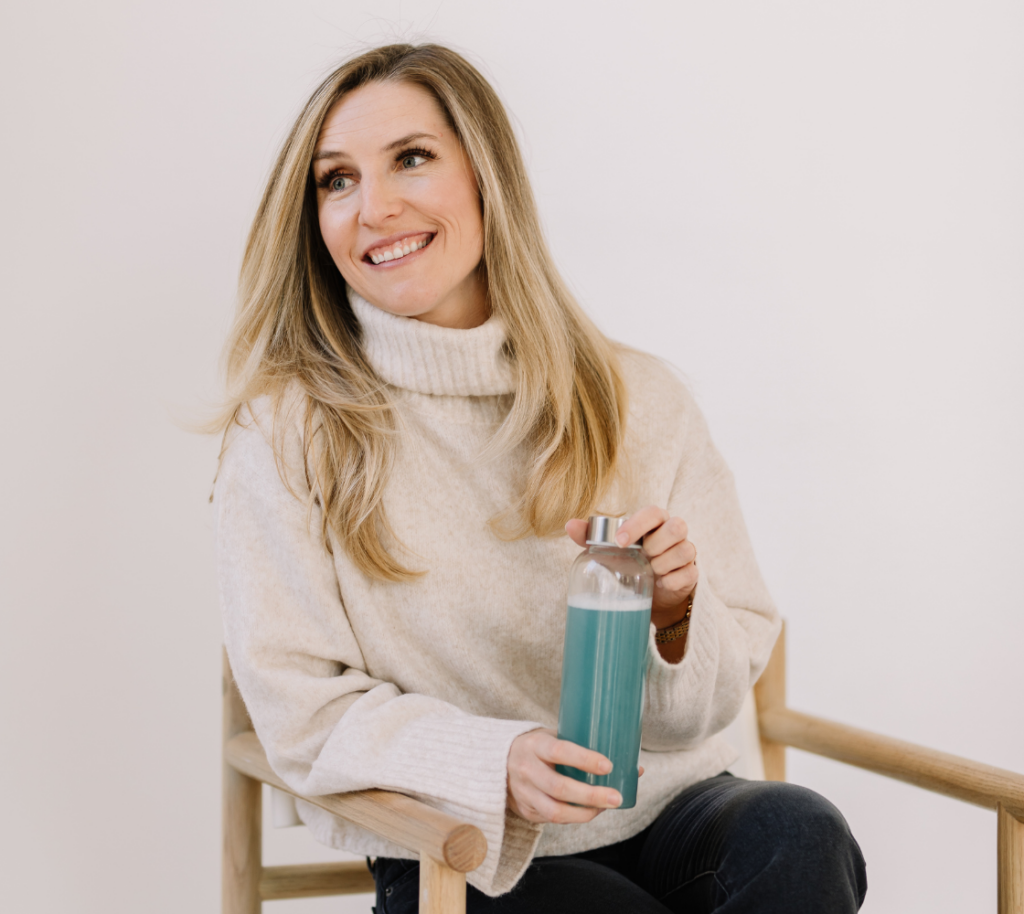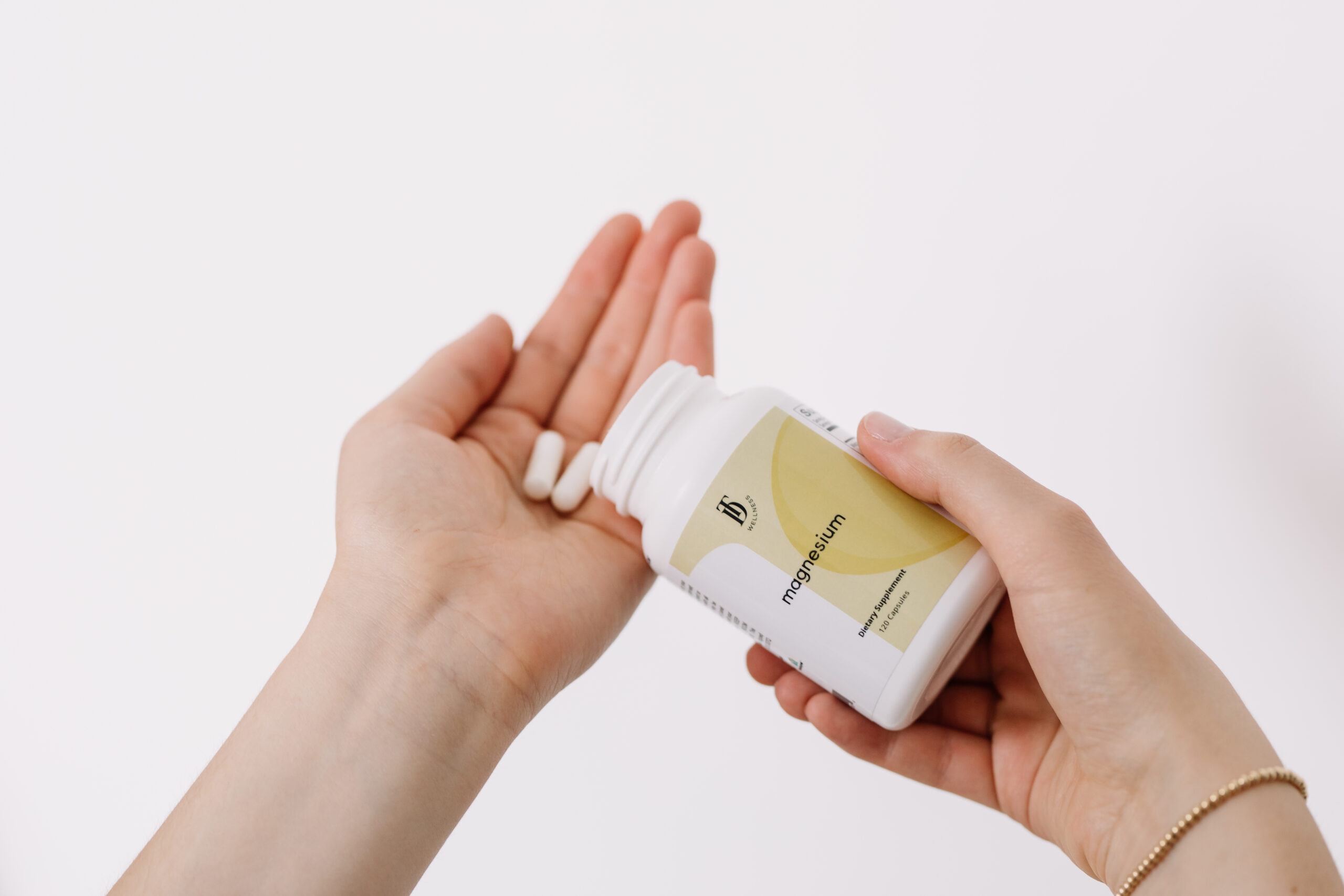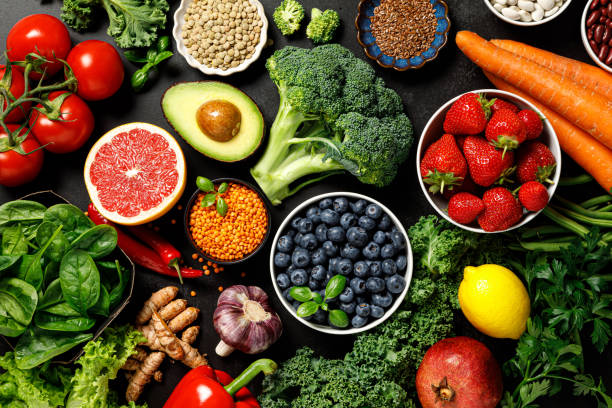10 Essential Nutrients You Might Be Lacking for Healthy Aging

As we get older, our bodies experience changes that can lead to lower levels of important nutrients, which can contribute to external (and even internal) signs of aging like brittle nails, fine lines and wrinkles, fatigue, and joint pain.
This slowdown in key nutrient production can start as early as your twenties!
What causes the depletion of nutrients as you age?
Several factors can contribute to this, including
- Reduced nutrient absorption due to reduced stomach acid and reduced enzyme production
- Slower metabolism
- Hormonal changes
- Dietary changes
- Gradual decline in organ function
- Chronic illness and medications
- Loss of bone density
- Increased mineral loss
How can you prevent nutrient deficiencies as you age?
Aging is a beautiful journey that brings wisdom, experience, and a deeper appreciation for life. While certain physiological changes, such as shifts in metabolism, nutrient absorption, and bone density, are part of the process, they don’t have to limit well-being.
By making intentional lifestyle choices, we can optimize aging and maintain vitality. Deficiencies can largely be prevented by taking a holistic approach to nourishing your body:
- Eating a variety of nutrient-rich foods
- Staying hydrated
- Targeted diet plans
- Daily movement and weight-bearing exercising
- Daily detox measures
- Supplementation (more on this below)
- Taking TDW Digest with your meals in order to increase nutrient digestion and absorption
What are some of the most common micronutrients depleted with age?
1. Calcium
Why it matters:
- Strengthens bones and helps prevent osteoporosis – Bone loss can begin as early as the 30s and speeds up with age
- Supports muscle function and helps cramps
- Helps nerves communicate properly
- Plays a key role in hormone regulation, including the secretion of parathyroid hormone (PTH)
Depletion signs:
- Bone pain or fractures, bone loss, muscle cramps or spasms, numbness, fatigue, brittle nails, dry/scaly skin
Foods to increase calcium intake: Quality (grass-fed or raw) full-fat dairy sources (if tolerated), sardines, spinach, nuts and seeds, kale, collard greens, bok choy
Supplementation to increase calcium intake: Bone Builder by Metagenix (found on Fullscript), Magnesium – it’s important to note optimizing magnesium is crucial for optimal calcium absorption and metabolism
2. Magnesium
Why it matters:
- Supports strong bones and helps maintain bone density
- Essential for heart health – maintains a regular heartbeat, regulates blood pressure, and supports healthy cholesterol levels
- Improves sleep and stress resilience
- Helps regulate insulin and balance blood sugar levels
- Supports nerve function
Depletion signs:
- Muscle cramps or weakness, bone loss, fatigue, nausea, numbness or tingling, irregular heartbeat
Foods to increase magnesium intake: Leafy greens, legumes, nuts and seeds
Supplementation to increase magnesium intake: Magnesium, Electrolytes
3. Vitamin D
Why it matters:
- Reduces inflammation and regulates oxidative stress
- Supports strong bones and muscles
- Strengthens the immune system by activating T-cells and macrophages
- Helps regulate insulin and glucose metabolism – lower levels are linked to a higher risk of Type 2 Diabetes
Depletion signs:
- Bone loss, low calcium, muscle weakness, fatigue, mood change (depression, anxiety), frequent infections and decreased immunity, insulin resistance
Foods to increase Vitamin D intake: Seafood, eggs, liver, mushrooms, high-quality full fat dairy sources (if tolerated)… And bonus, don’t forget an easy and effective way to increase Vitamin D levels through time spent in sunshine!
Supplementation to increase Vitamin D intake: Vitamin D3/K2
4. Vitamin B12
Why it matters:
- Supports red blood cell production and DNA synthesis – particularly crucial for preventing anemia
- Promotes a healthy nervous system by improving neurotransmitter function
- Boosts energy by helping convert food into glucose
- Supports mood and mental health by improving cognitive function and reducing risk of depression and memory issues
Depletion signs:
- Acne, rashes, dry and flaky skin, cracked lips, fatigue, paleness, headaches, dizziness, muscle weakness
Foods to increase Vitamin B12 intake: Beef, poultry, seafood/shellfish, eggs, nutritional yeast
Supplementation to increase Vitamin B12 intake: B Complex
5. Folate (Vitamin B9)
Why it matters:
- Essential for DNA production, red blood cell development, and healthy tissue development
- Important during pregnancy for preventing birth defects
- Regulates homocysteine levels in the blood – high levels are linked to increased risk of heart disease (source)
- Supports brain and nervous system function
Depletion signs:
- Anemia, fatigue, mouth ulcers, muscle weakness, palpitations
Foods to increase folate intake: Asparagus, brussels sprouts, broccoli, leafy greens, avocado, eggs, liver, citrus fruits, legumes
Supplementation to increase folate intake: Methyl Aid (we use folate rather than synthetic folic acid, which makes this form safe for those with MTHFR gene – to learn more, read What You Need to Know About Methylation & the MTHFR Gene Mutation)
6. Vitamin C
Why it matters:
- Protects cells, builds muscle, creates blood vessels, and heals wounds
- Aids in iron absorption – Pro Tip: Eat iron-rich foods and Vitamin C together in order to aid in iron absorption.
- Supports a strong immune system – supports the production of white blood cells, which are essential for fighting infections
- Essential for collagen production for healthy skin, hair, and nails
Depletion signs:
- Fatigue, irritability, easy bruising, muscle pain, joint pain, bleeding gums, nosebleeds, poor wound healing
Foods to increase Vitamin C intake: citrus fruits, bell peppers, berries, kiwi, tomatoes, cruciferous vegetables
Supplementation to increase Vitamin C intake: Complete C
7. Zinc
Why it matters:
- Boosts immune function by helping the body fight infections
- Promotes tissue health and supports healthy skin, helping prevent acne or rashes and healing wounds
- Essential for DNA production and cell growth
- May enhance memory and cognitive performance, especially as we age
Depletion signs:
- Fatigue, irritability, skin rashes, poor wound healing, brittle nails, loss of taste or smell, memory problems, frequent infections
Foods to increase zinc intake: Shellfish, beef, poultry, pork, legumes, nuts
Supplementation to increase zinc intake: Zinc Supreme by Designs for Health (found on Fullscript)
8. Iron
Why it matters:
- Helps make red blood cells that carry oxygen throughout the body
- Boosts energy and fights fatigue
- Supports a strong immune system by improving oxygen flow, aiding immune cell production, and reducing inflammation
- Essential for brain health – concentration, focus, and memory
- Prevents ron-deficiency anemia, which can cause weakness and tiredness
Depletion signs:
- Anemia (aka low iron) can cause fatigue, hair loss, muscle weakness, cold hands and feet, dizziness, increased heart rate, headaches, and other issues
Foods to increase iron intake: Seafood/shellfish, organ meats, beef, poultry, eggs, legumes
Supplementation to increase iron intake: Hemevite by Apex, Iron Glycinate by Xymogen, or beef liver pills (all found on Fullscript)
9. Potassium
Why it matters:
- Regulates fluid balance in cells, tissues, and organs
- Supports a steady heart rhythm and healthy blood pressure
- Helps muscles contract and prevent muscle
- Essential for nerve signaling – supports communication between nerves and muscles
- Helps maintain the body’s pH balance
Depletion signs:
- Muscle weakness, muscle cramps and twitches, irregular heartbeat, fatigue, tingling or numbness, constipation, high blood pressure, dehydration
Foods to increase potassium intake: Dried fruits, potatoes, legumes, squash, greens, beets, bananas, citrus fruits, coconut water, nuts, poultry, salmon
Supplementation to increase potassium intake: Electrolytes
10. Omega-3 Fatty Acids
Why it matters:
- Supports heart health by reducing inflammation and lowering blood pressure
- Essential for brain function – may improve memory, focus, and potentially reduce risk of neurodegenerative diseases like Alzheimer’s
- Powerful anti inflammatory – important for everything from joint health to immune regulation
- Helps regulate mood and promote overall well-being
Depletion signs:
- Cognitive decline, joint pain and stiffness, cardiovascular irregularity, inflammation, dry skin or eyes, hair thinning, low mood
Foods to increase omega-3 intake: Fatty fish, shellfish, eggs, flaxseed, chia, walnuts
Supplementation to increase omega-3 intake: Omega
Make it easy?
Note that most of the aforementioned nutrients are easily available in our easy-to-use and convenient Everyday Wellness Bundle. We like to make wellness easy!
Bonus! – Protein + Collagen
While technically a macronutrient (everything above would fall under “micronutrient” status), we couldn’t leave protein off the list because it’s a critical piece to an anti-aging regimen. As we age, our protein needs go up and our efficiency at digesting, absorbing, and using protein goes down. It must be noted that collagen is the most abundant type of protein in the human body, and the primary cause of collagen loss is age – beginning in the mid-20s and accelerating over time.
Older adults are less responsive to protein intake compared to younger individuals. This means the older you get, the less efficient your body will be at digesting, absorbing, and utilizing protein. However, this lack of responsiveness can be overcome with:
- Higher levels of protein consumption to support a beneficial effect of increased protein in older populations (source)
- Taking Digest with your meals, which boosts digestive strength and efficiency
- Proper eating hygiene, which includes eating while sitting down and calm, fully chewing food, being present, eating slowly
Why it matters:
- Strengthens skin, hair, and nails
- Improves gut health
- Regulates hormones
- Regulates blood sugar and decreases cravings
- Improves memory, brain health, and neurotransmitter activity
- Maintains muscle mass, strength, and function (Optimal protein prevents age-related muscle-loss, known as sarcopenia.)
- Supports bone health
- Helps with weight management
- Supports wound healing
Depletion signs:
- Sarcopenia (loss of muscle mass), muscle weakness, hair loss, brittle nails, low mood, frequent illness, poor wound healing, swelling, decreased metabolic health, hormone imbalance
Foods to increase protein intake: Seafood, beef, chicken, pork, legumes, eggs, high-quality full fat dairy sources (if tolerated)
Supplementation to increase protein intake: Bone Broth Protein (for protein + collagen), Blue Beauty Drink (for collagen)
Want to learn more about YOUR nutrient status?
A nutrient profile is helpful for narrowing down what your body needs, such as exact supplements and lifestyle changes.
I offer the option to purchase a gold standard functional test for this in my TDW Community membership – The Metabolomix+ Nutritional Assessment is a non-invasive way that measures 125 biomarkers, including antioxidants, B vitamins, minerals, digestive support, fatty acids, and amino acids.
It is especially ideal for people who want to improve their lifestyle, are tired or stressed, or are pregnant or postpartum mamas wanting to optimize nutrition.
You can also schedule a 1:1 consult with a trained Nutritional Therapy Practitioner on my team to review your results and tailor a plan to you. These services can only be accessed through my TDW Community.
Curious for more resources?
Check out these articles! They are packed full of tips, tricks, and wisdom for healthy aging and general well being!
Share This Post:
Your Wellness Deep Dive
- Be the first to learn about new healthy living resources, blog posts, and exclusive TDW offerings by getting on my insider list.
- Find healthy living products with ingredients you can trust – the same ones I personally use for myself and my family – in the TDW Shop. Check out our protein powders, electrolytes, supplements, and more!
- Get personalized support through the TDW Community. When you become a member, you get access to functional medicine expertise from me and my team, functional medicine lab testing and 1:1 consults, a digital library of exclusive wellness content, live monthly Q&As with me, and so much more!
YOU MAY ALSO LIKE:
Helping you get your gut right, improve energy, boost immunity, balance hormones, sleep better and look + feel your best
DISCLAIMER
PRIVACY POLICY
TERMS + CONDITIONS
ACCESSIBILITY
© 2025 Taylor Dukes Wellness
LEARN
SHOP
ABOUT
TDW Community
Free Guides
Blog
TDW Store
Fullscript
About Taylor
Press
Contact
COOKIE POLICY
SITE CREDIT
Trusted Products



